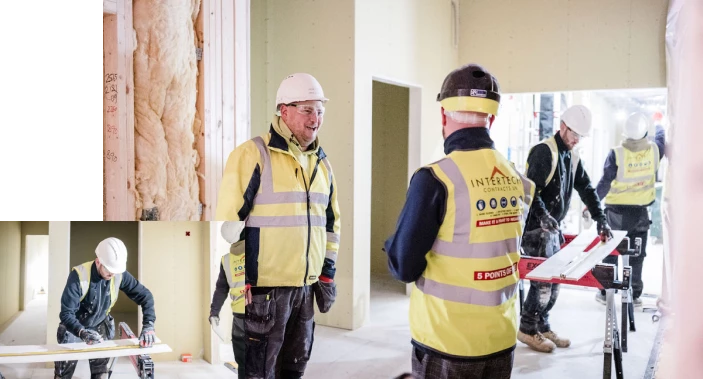
The primary purpose of fire doors is to impede the spread of a fire should one break out and to ultimately save lives. Fire doors are an essential part of your building's passive fire protection system and are a legal requirement for many commercial premises. They are also required in domestic settings and will be part of building regulations for certain properties.
What are the fire door regulations for the UK?
It is a legal requirement for the vast majority of commercial buildings, such as offices, public buildings and factories, to install fire doors into their premises.
Fire doors not only save lives but are installed to limit the spread of a fire and protect a building from further damage. They are intended to contain a fire in the room where it started and to protect escape routes from the effects of fire, such as smoke, gases and flames.
Existing buildings are governed by the requirements laid out in the Regulatory Reform (Fire Safety) Order: 2005 (RRO).
Fire doors are intended to restrict the spread of fire for a specified time and are constructed from materials designed to withstand fire for either 30 minutes or 60 minutes or more, depending on the make-up of the door. The length of time should be clearly labelled on your fire door.
The manufacture of a fire door can vary, but it is thicker than a standard domestic door, and most have a solid core of variable non-flammable material. The design of the door frame is also essential, and this should also be of a certified material. Fire doors and frames must be tested together.
There should be a gap of no more than 2-3mm all the way around the door, and gaps are fitted with intumescent seals that will expand when exposed to a fire's heat.
Fire doors must be installed by a qualified professional to ensure that they have been installed correctly. It is also imperative that fire doors are maintained and inspected by a qualified professional regularly. The regularity of inspections depends on how often the doors are used; for example, doors on stairs are used more frequently than on a boiler room, so they would need to be checked more often. Your installation company can give you advice on maintenance.
Remember that as an employer, you also have an obligation to your employees' safety under the Health & Safety at Work act 1974.
What can you use fire doors for?
Fire doors are designed to stop the spread of fire, so they should be installed in areas where they can contain the fire in the place where it started and should protect any fire escape routes.
A fire assessment on your property will highlight where fire doors will be required.
Fire doors should always be clearly marked with relevant signage.
For example, if your property contains a kitchen or cooking facilities, a fire door on the entrance or exit to this room will help contain a fire that may break out in this area.
Stairwells should also have fire doors fitted as they are used for exiting the building, so they are classed as a primary escape route.
As they are so crucial to the safety of your premises, fire doors should always remain closed and should be fitted with automatic closing mechanisms. They should never be propped open, although they can be equipped with a fire door retainer that can hold a door open but is designed to recognise a fire and automatically close it. Speak to your installer about door retainers if you feel that any of your doors need to be kept open.
Domestic fire door regulations
Whilst fire doors are not a legal requirement in many UK homes; there are some exceptions. However, some domestic environments are required to be fitted with fire doors. For example, if you are a landlord and your property is rented out, you will need to install fire doors to ensure the safety of your tenants.
Houses of multiple occupancy or blocks of flats should have fire doors fitted at the entrance to any communal areas.
Any flats on floors above 4.5m from ground level should have fire doors fitted between any habitable rooms. Although, ground-floor flats do not generally need internal doors as long as there is a clear route to escape if necessary.
If you live in a new build or are renovating your home with more than three floors, a fire door is required from any habitable room that enters a stairwell. Additionally, a fire door will also be necessary for the stairs if you have a loft conversion added to a house of two floors.
An FD30 fire door (30-minute fire door rating) is usually sufficient for domestic settings.
All fixtures and fittings on a fire door (including hinges and locks) must be fire rates. However, if you would like a more aesthetic finish to your fire doors, you do not need to use special paint or varnish if you wish to paint them.
Intertech Contracts is fully accredited under the BM TRADA Q-MARK scheme for fire door installation and fire door maintenance. Our team of experts can provide you with a complete fire door inspection and survey to check that your current fire doors meet the required British Standards. We are also fully trained and certified to install and maintain your fire doors. If you need any advice or a quote, please do not hesitate to get in touch with our team today.
